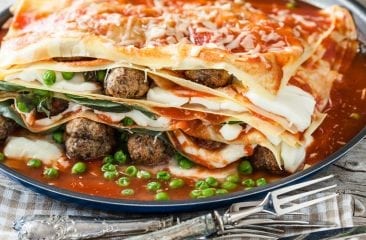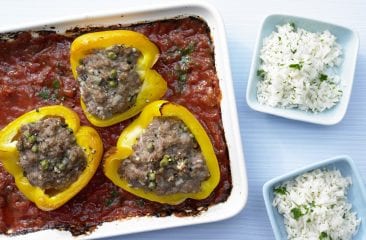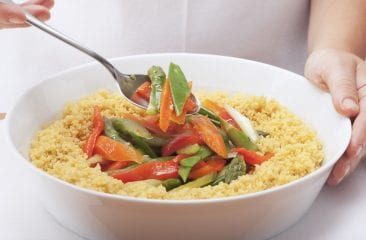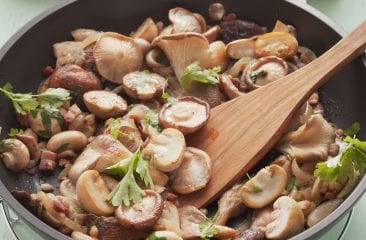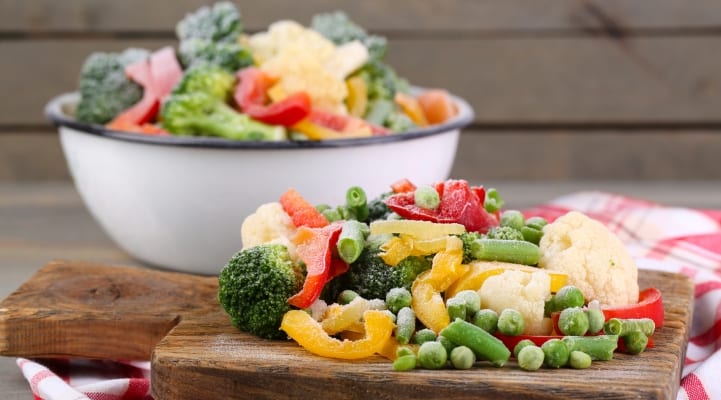
When we are deciding what vegetables to buy – particularly during the colder months – we often find ourselves wondering what would be the better choice: tinned, frozen or imported fresh vegetables? In winter, our bodies need a healthy supply of vitamins to ward off colds and other seasonal bugs, but which of these types of vegetable contain the most nutrients?
Long transport routes and lengthy storage diminish the vitamin content of fresh vegetables
Vegetables contain the most vitamins when freshly harvested and therefore are best eaten as soon as possible. After harvest, the effect of heat, oxygen and light starts to destroy their health-giving vitamins and so lengthy storage times, and long transport distances, often lead to significant depletion of their vitamin content. So as you can see, when buying fresh vegetables, it’s important to pay attention to where they come from – try to buy locally sourced produce if you can, or possibly goods sourced directly from the producer.
Freezing preserves vitamins
Frozen vegetables are a good alternative to fresh. Within two to three hours of harvesting, the vegetables are blanched with a quick dunk in hot water to get rid of any germs and then shock-frozen (rapidly cooled down to a temperature of minus 40°C in just a few minutes). This process preserves most of the vitamins, freezing them alongside the vegetables, and maintains the food’s consistency and taste. Subsequently, it is vitally important for the quality of the frozen vegetables that the cold chain is maintained without any interruption. In addition, you need to pay very careful attention to the instructions on the packaging when preparing them, as the vegetables are essentially still raw – they must be cooked appropriately but not over-cooked, as their nutrients will be destroyed. Follow the instructions and you’ll be sure to have a plate full of tasty, crisp vegetables that are packed with nourishing vitamins.
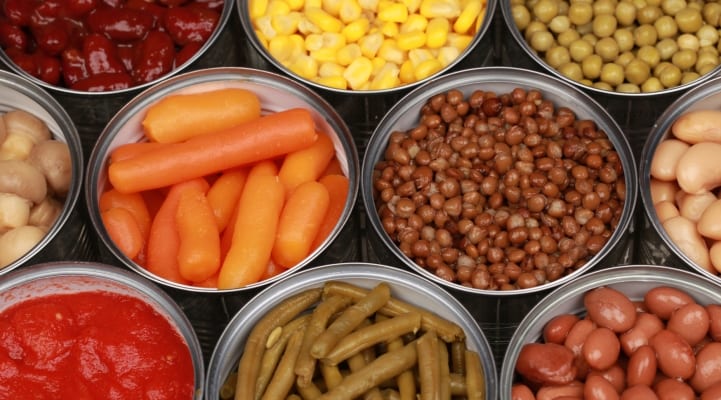
Vitamin loss during the preparation of tinned vegetables
Vegetables that are preserved in tins or jars start their journey in the same way as their frozen cousins in that they are moved quickly from field to factory for cleaning and chopping. However, the process used to prepare them makes all the difference: the vegetables are blanched for a few minutes in hot water or steam, at temperatures up to 120 °C, to cook and sterilise them. Once they have cooled, a special liquid is added – usually a mixture of water, sugar, salt, preservatives, and the like – according to the type of vegetable. Tinned vegetables, preserved in this way, have a lower vitamin content because of the long cooking time, but they have the advantage of a long shelf life. Also, they only need to be heated briefly before eating, which means no more vitamins are lost before they hit the plate.
Fresh vegetables have the edge overall
Fresh, frozen or tinned? At the end of the day, when it comes to which to buy, it’s all down to personal preference. However, one thing is certain: when home-grown vegetables are in season, make the most of them and go for fresh whenever you can. That’s obviously no problem in the warmer months but in winter there aren’t that many options. Our tip: stock up with lamb’s lettuce, spinach, sprouts, carrots, beetroots and onions, as these are great vitamin-rich alternatives that will get you through the winter. And, if your local farmers have nothing fresh to offer during the colder months, frozen vegetables are definitely the next best thing.
If you have any questions about Liebherr Appliances, please write to us! Use the comment function below this post or start/join in discussions with us on Facebook
